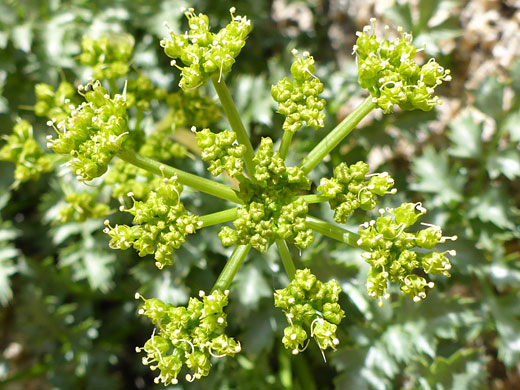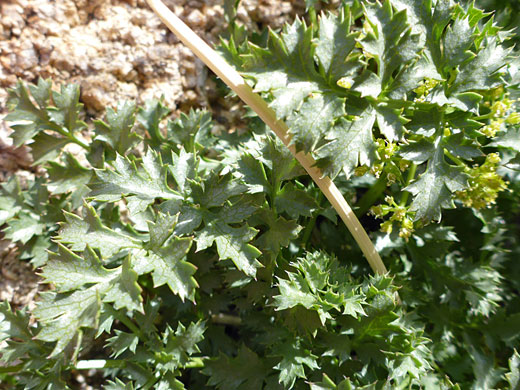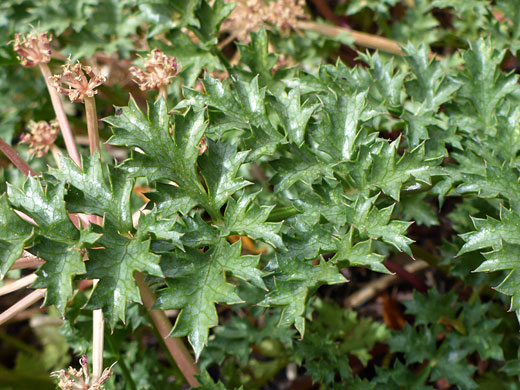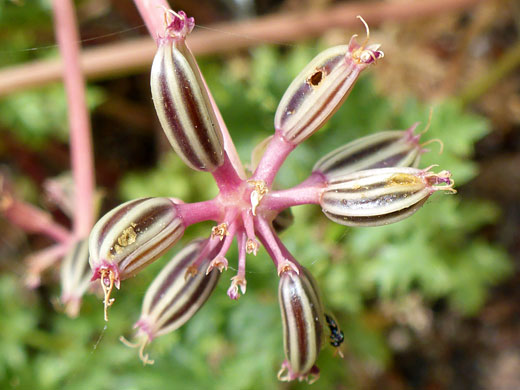Common name:
Parish's umbrellawort
Family:
Scientific name:
Tauschia parishii
Main flower color:
Range:
South California
Height:
Up to 15 inches
Habitat:
Sandy or rocky locations, often in coniferous woodland, from 3,500 to 8,000 feet
Leaves:
Once or twice pinnate; up to 6 inches long, on stalks of up to 6 inches
Season:
April to July
Tauschia parishii occurs at medium elevations across the mountain ranges of southern California. The inflorescence is a compound umbel typical of the apiaceae family, with between 12 and 18 rays, each holding around ten tiny, yellow-green flowers, which have protruding stamens. The flowers are somewhat inconspicuous, not brightly colored like those of some similar carrot species. Rays may be between 2 and 4 inches in length, all approximately equal; some are reflexed, angled below the plane. The base of the umbel has no bracts, though there are a few narrow, pointed bractlets beneath the individual flower clusters. The oblong, purplish fruits are crossed by several prominent ribs.
The flower stalk (peduncle) is generally longer than the leaf stalks. The petiolate leaves are usually twice pinnate, and the leaflets are sharply lobed, or toothed. Stems and leaves are usually glabrous but may have a light hair covering.
The flower stalk (peduncle) is generally longer than the leaf stalks. The petiolate leaves are usually twice pinnate, and the leaflets are sharply lobed, or toothed. Stems and leaves are usually glabrous but may have a light hair covering.
All Contents © Copyright The American Southwest | Comments and Questions | Contribute | Site Map






